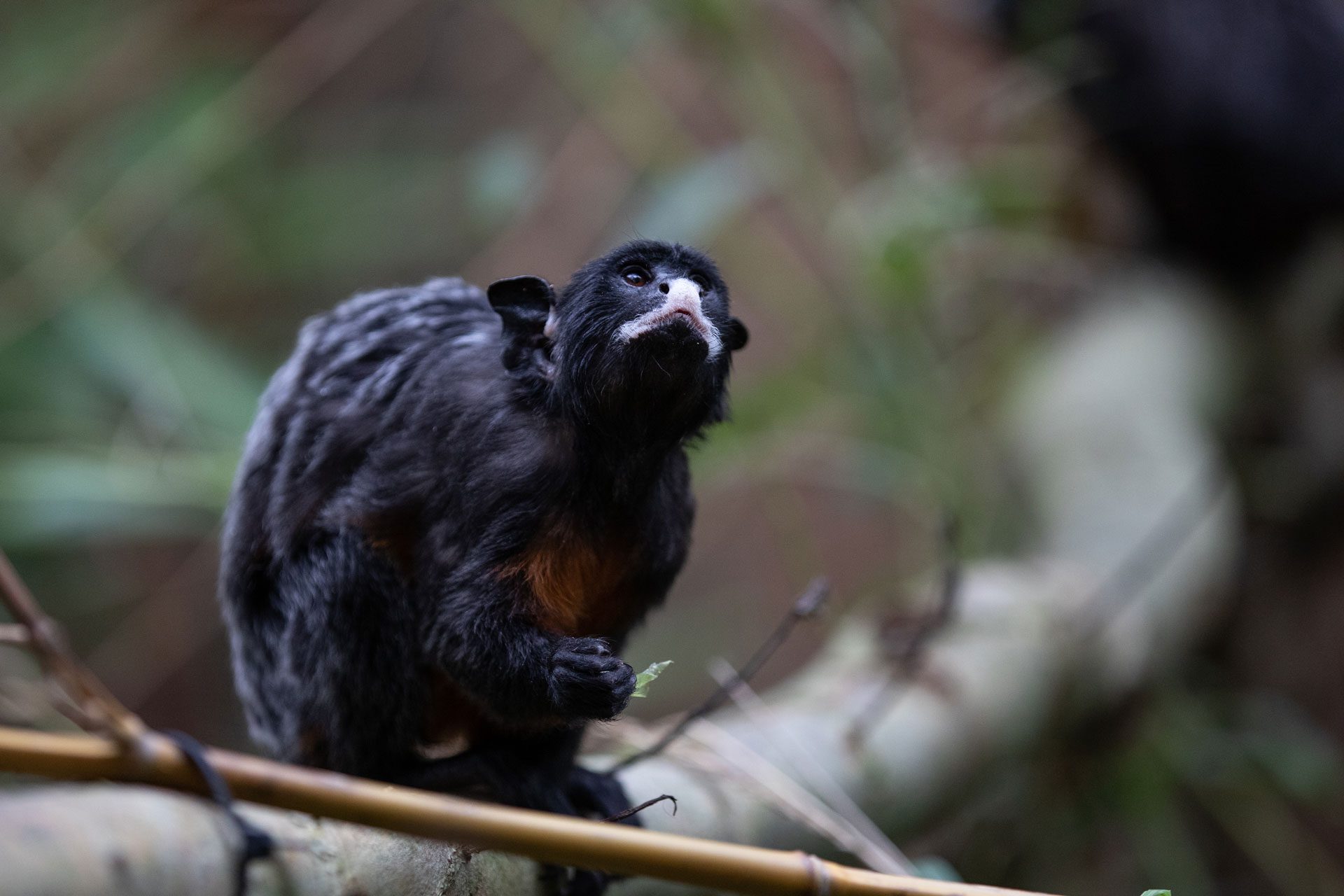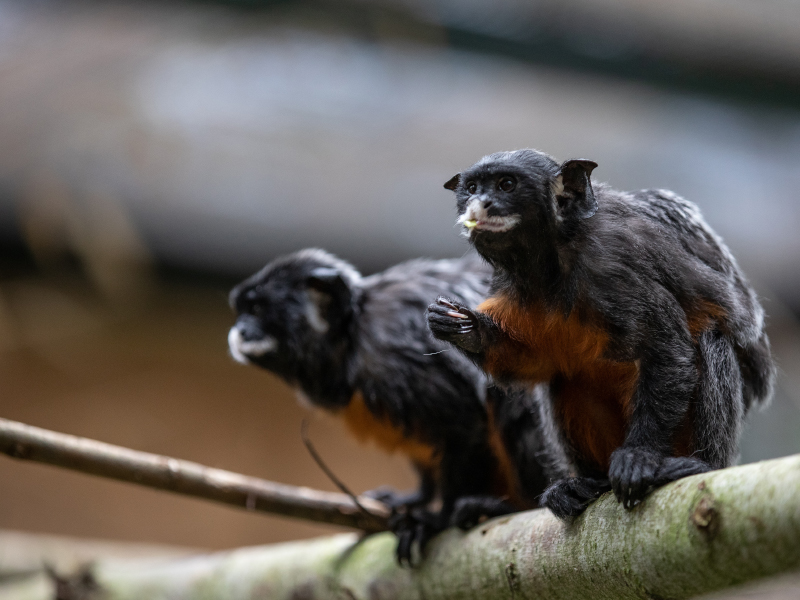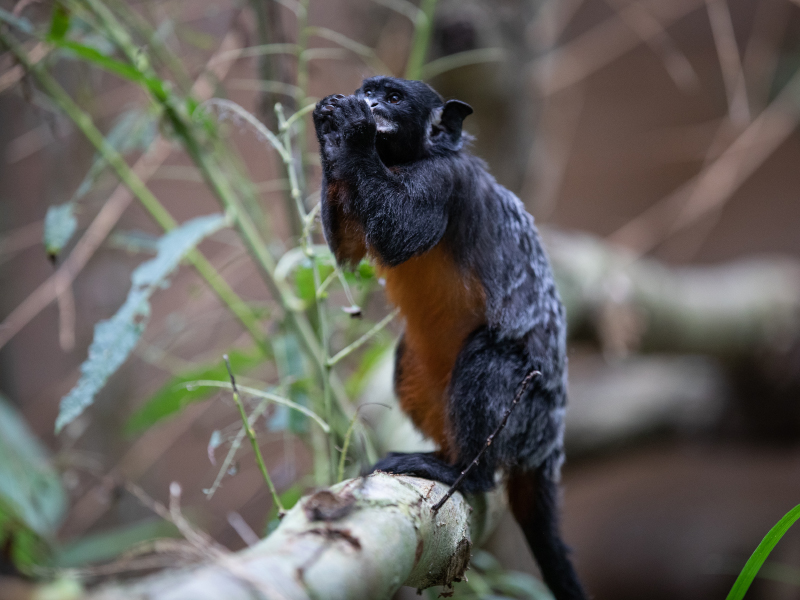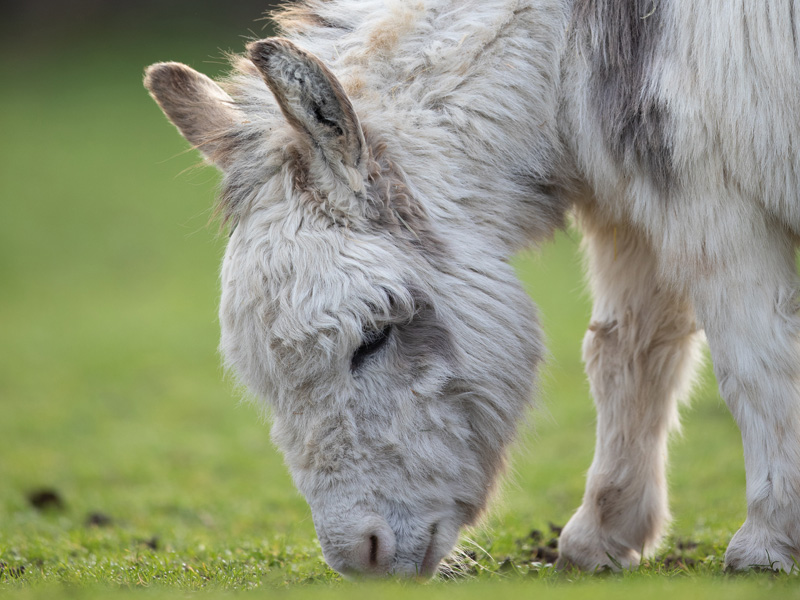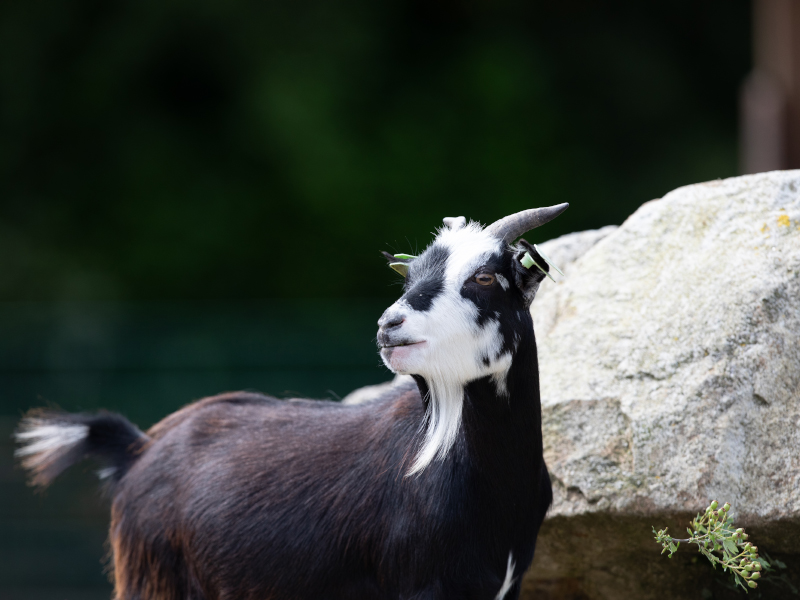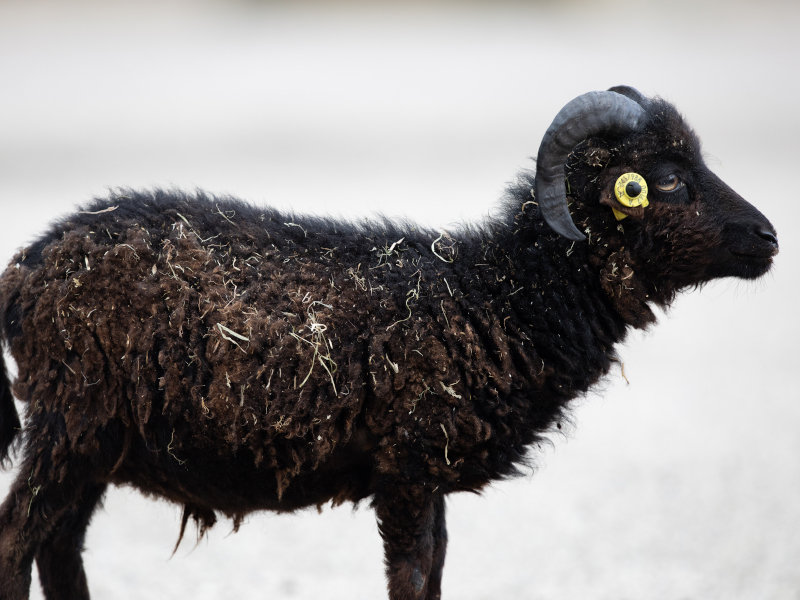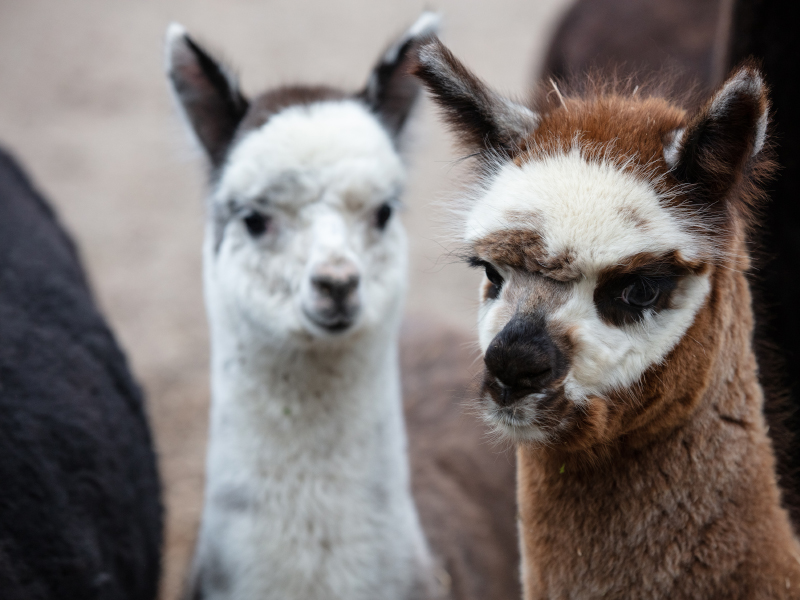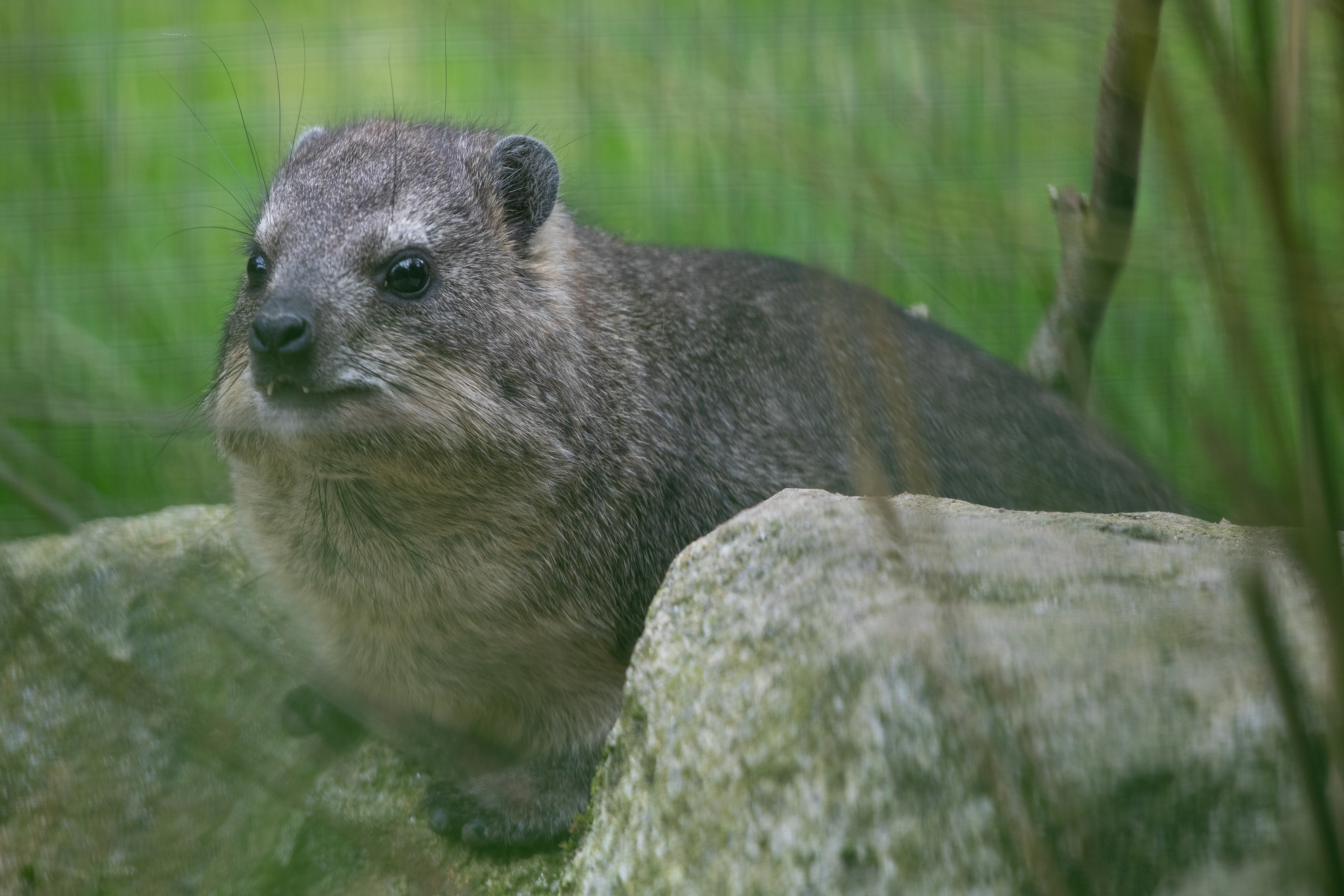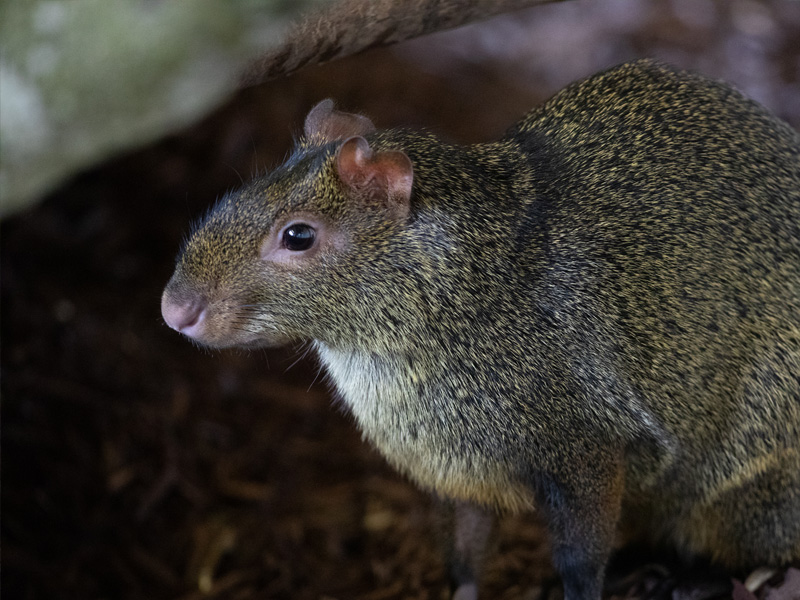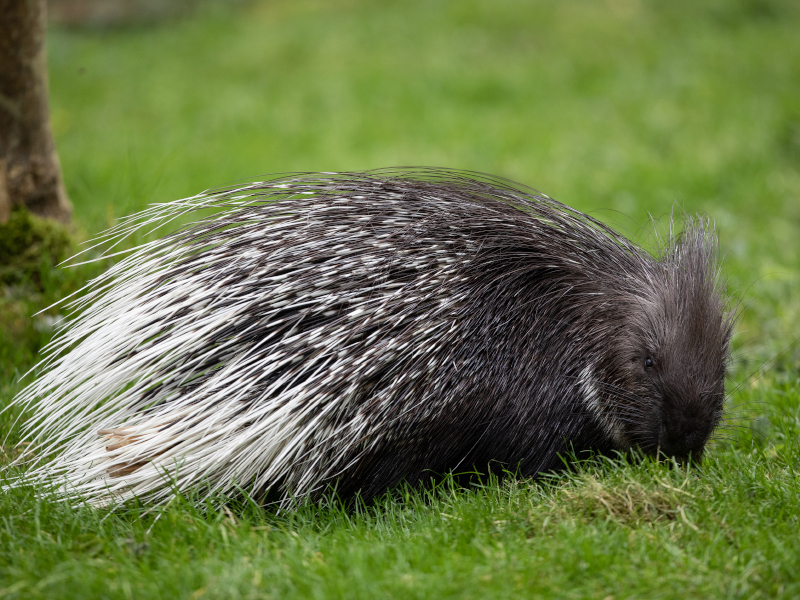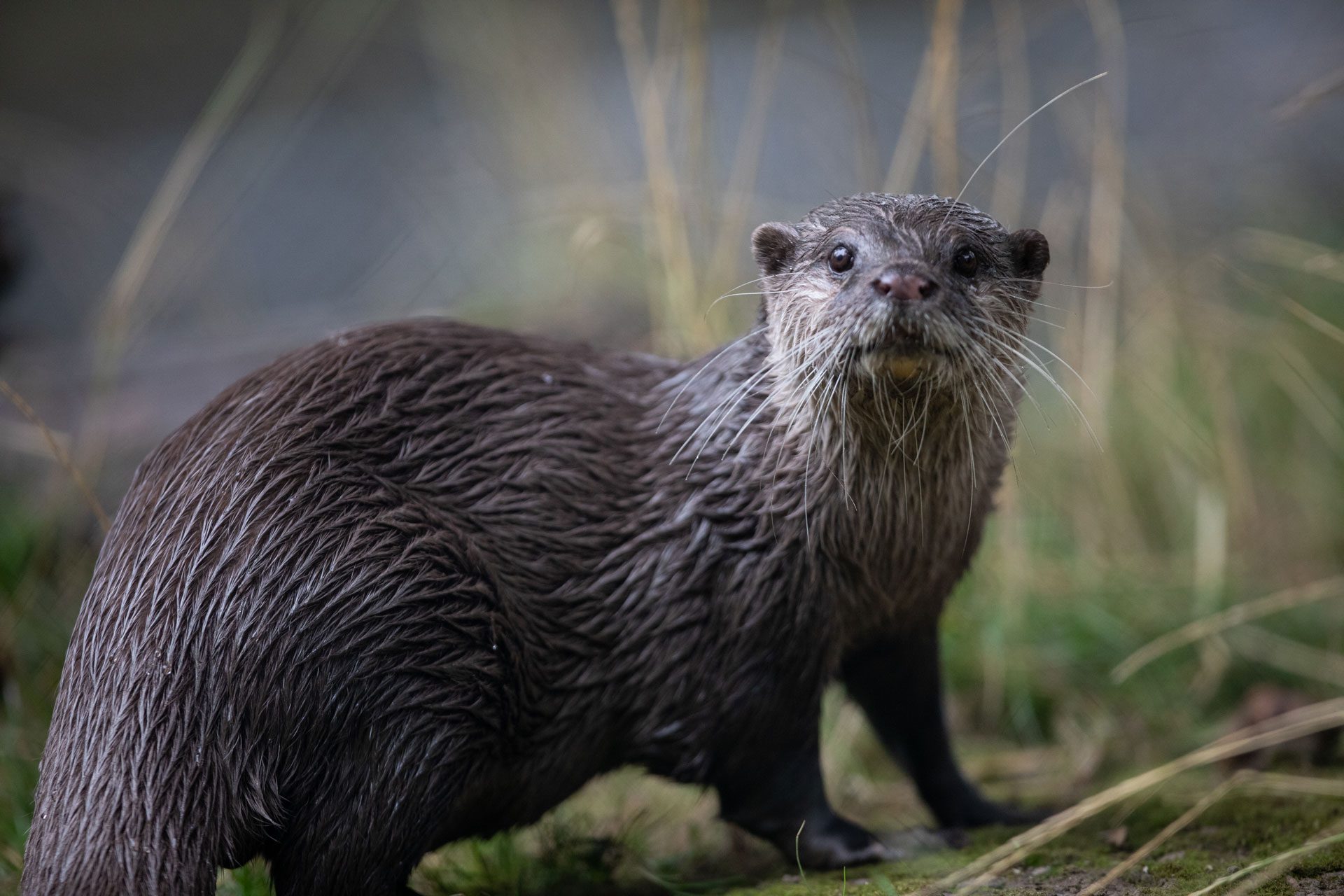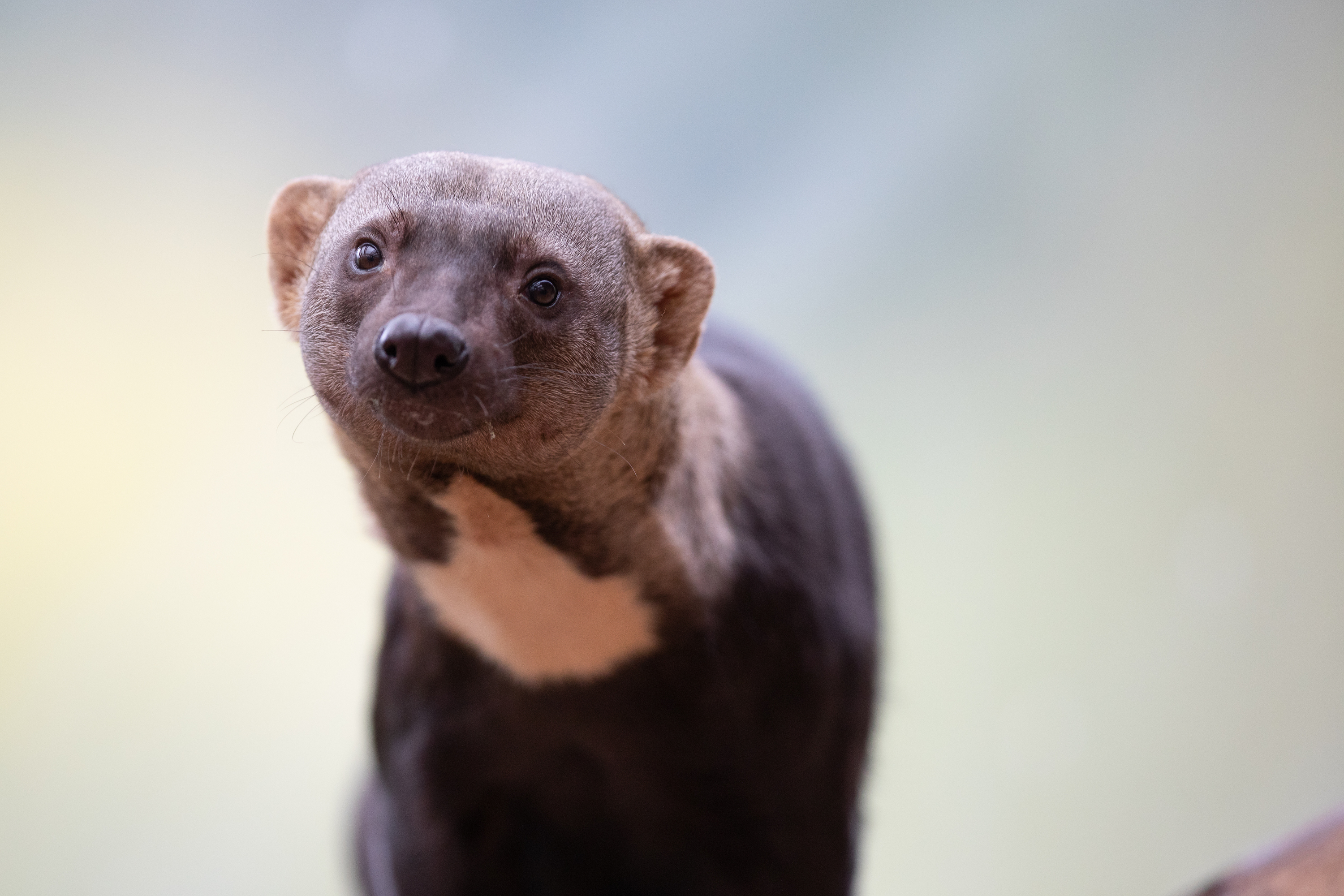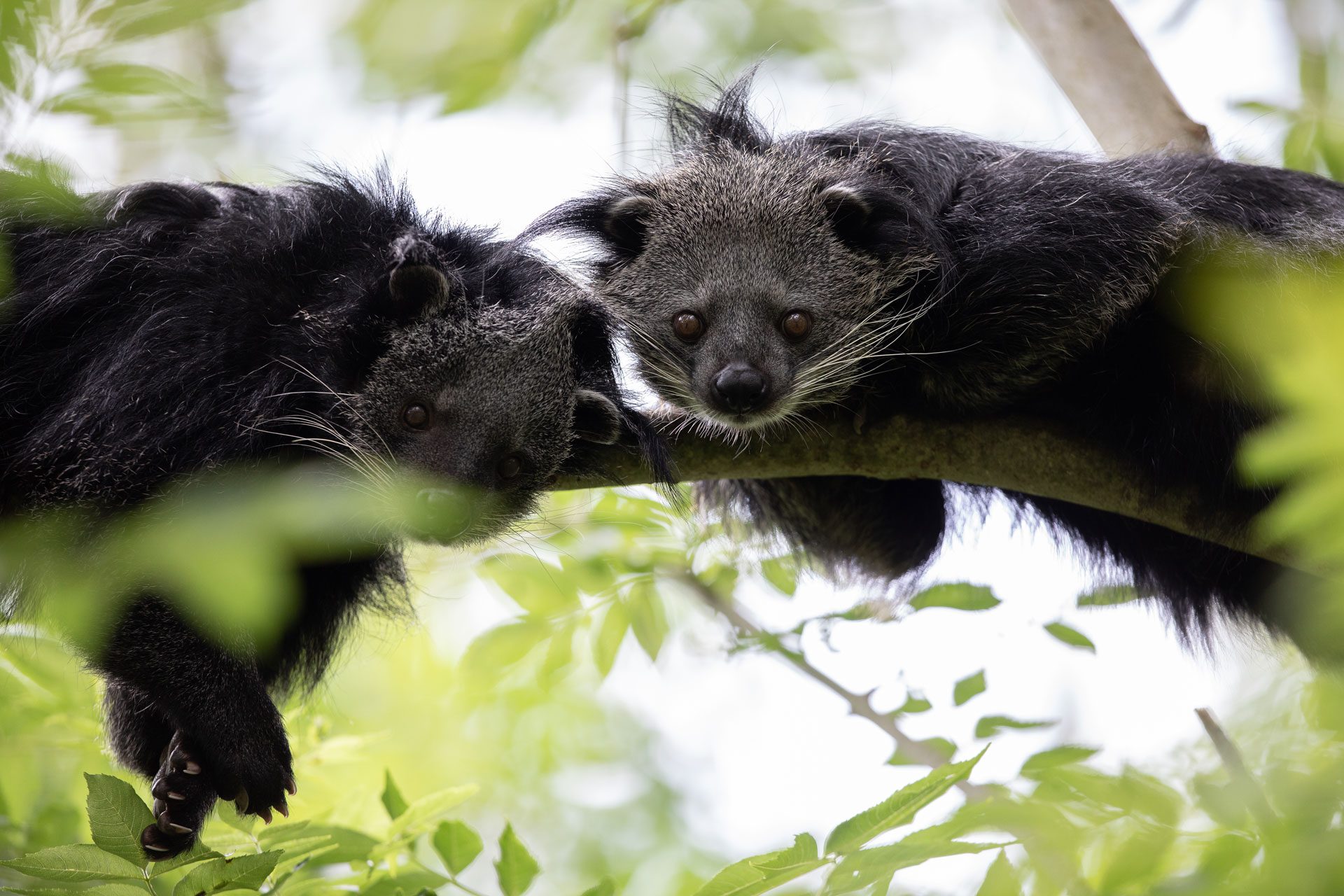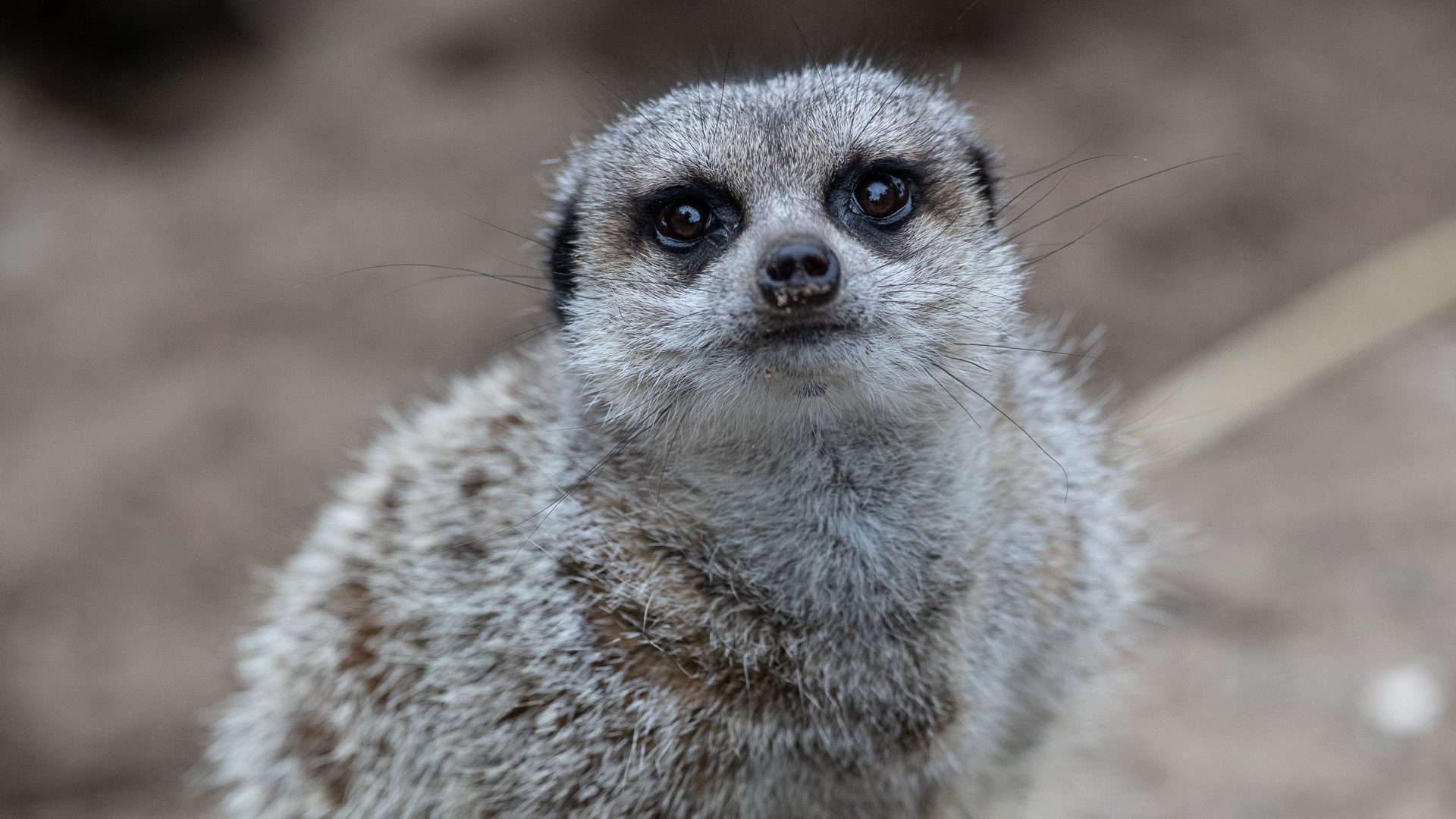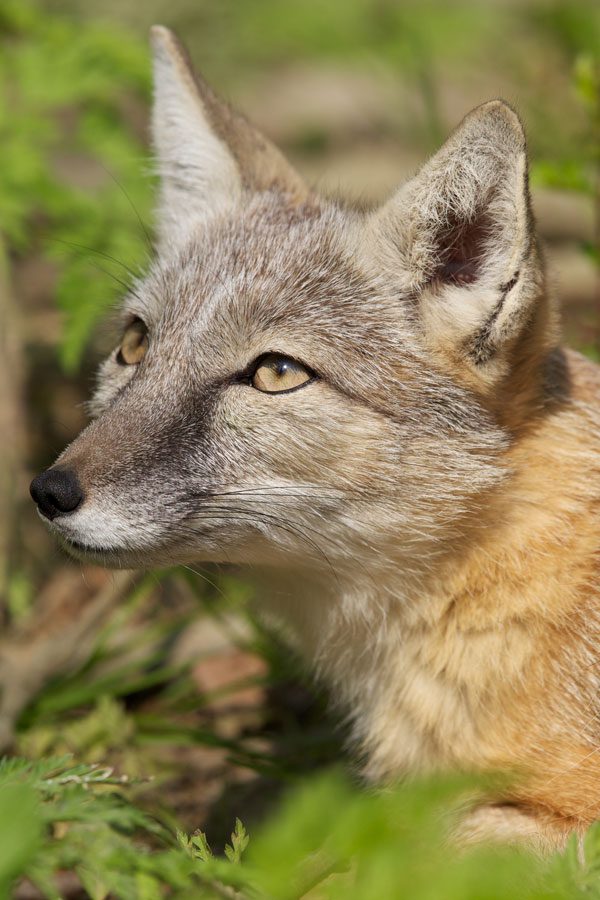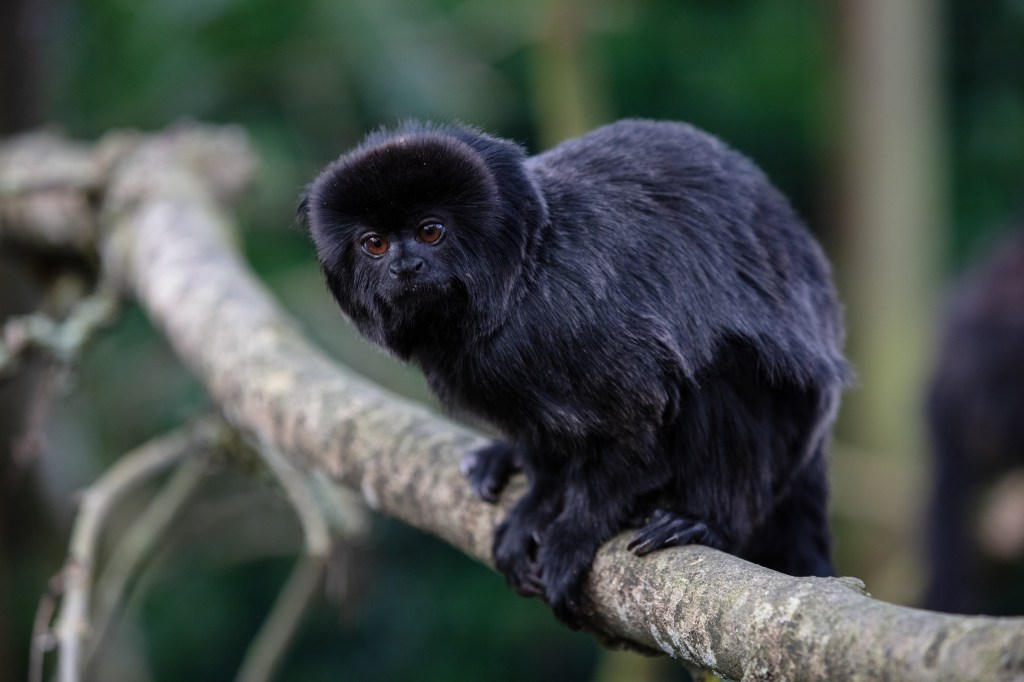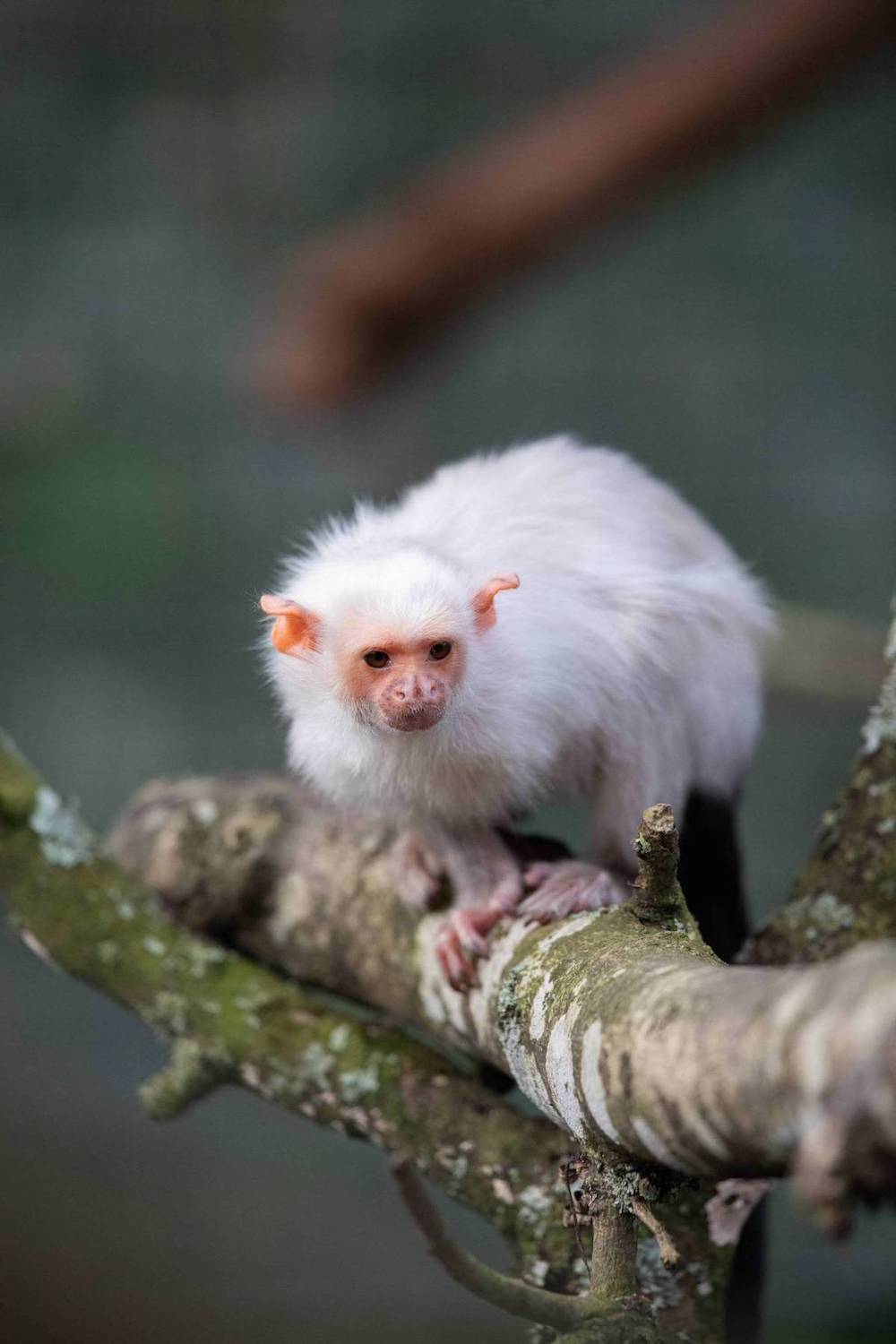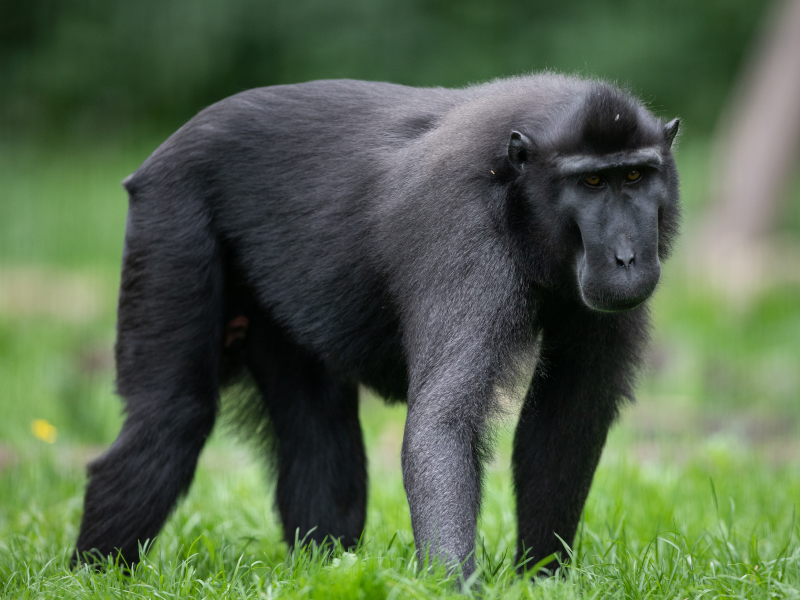Red-belied tamarins are mostly dark brown with red marks on their belly and chest. The white “moustache” around the nose and mouth gives them a distinctive appearance.
The males and females look the same making them a monomorphic species. They are a relatively small New World monkey that are active during the day and spending their time the trees. They are skilled climbers with a long tail that helps them to balance while moving through the trees and small claws to help with their grip.
They live in social groups of up to 15 individuals consisting of a breeding male and female, their offspring, and other male helpers.
Red-bellied tamarins play an important role in the ecosystem, that they inhabit. By eating fruits, they carry out seed dispersal and therefore contribute to the healthy growth of plants in the rain forest.

Popular Searches
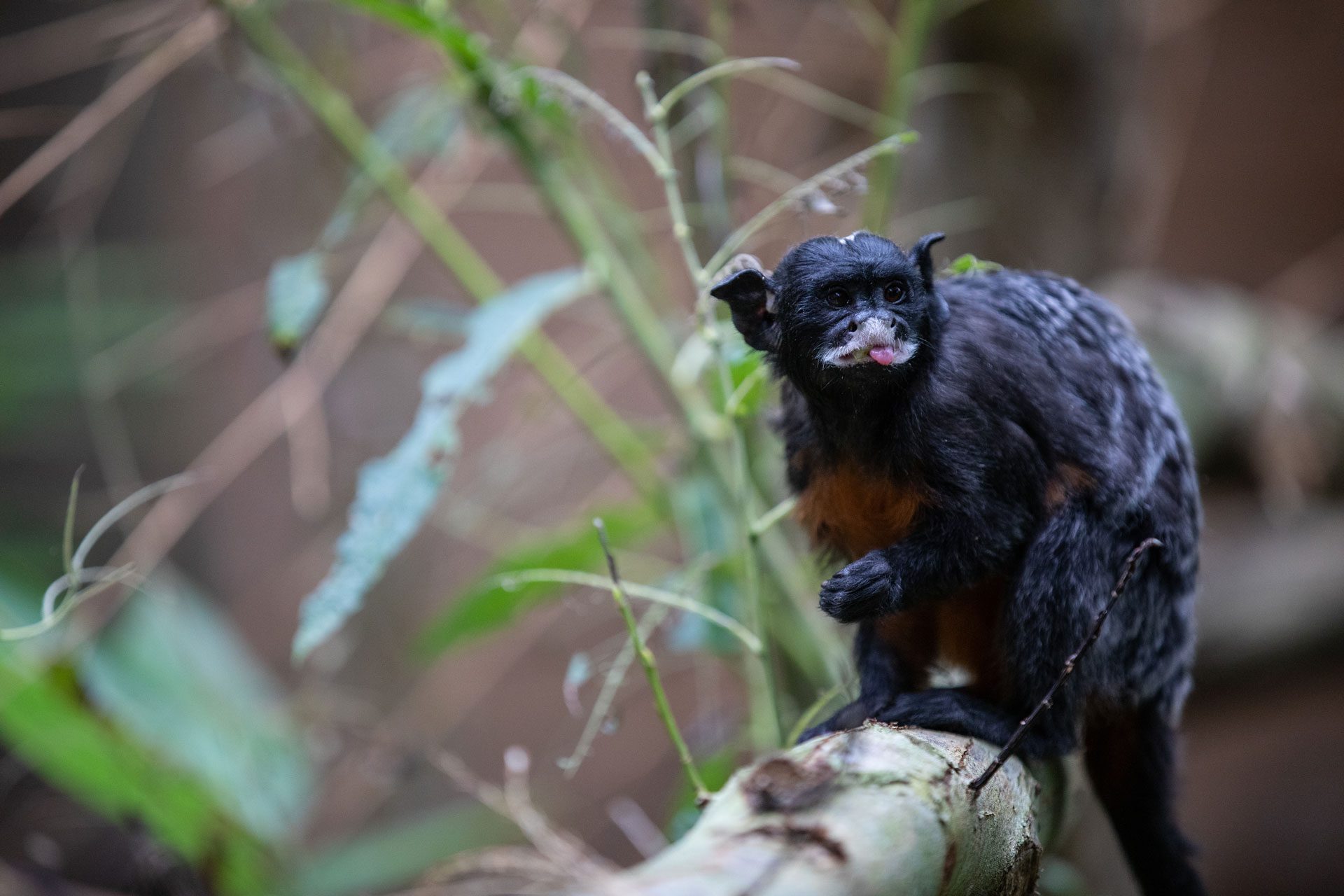
Red-bellied tamarin
-
Introduction
-
Conservation
Red-bellied tamarin are classed as least concern.
There is no evidence for any major threats, but habitat loss may have negative impacts on some populations.
Emerald Park conservation contribution:
EEP
Red-bellied tamarins are part of the EAZA Ex-situ Programme (EEP). This means that their population is managed to ensure that there are heathy individuals within EAZA member zoos should there be the requirement of reintroductions, to the wild, in the future. -
Habitat
Red-bellied tamarins are from South America, they occur in the primary and secondary rainforest of the Amazon in Brazil, Bolivia, and Peru.
-
Fun Facts
They are arboreal animals, living in the trees, and will typically inhabit the middle section of the canopy.
Red-bellied tamarins are known to form associations with other callitrichids, such as Goeldi’s monkeys. By living together this gives both species a stronger defence of their home-range.



